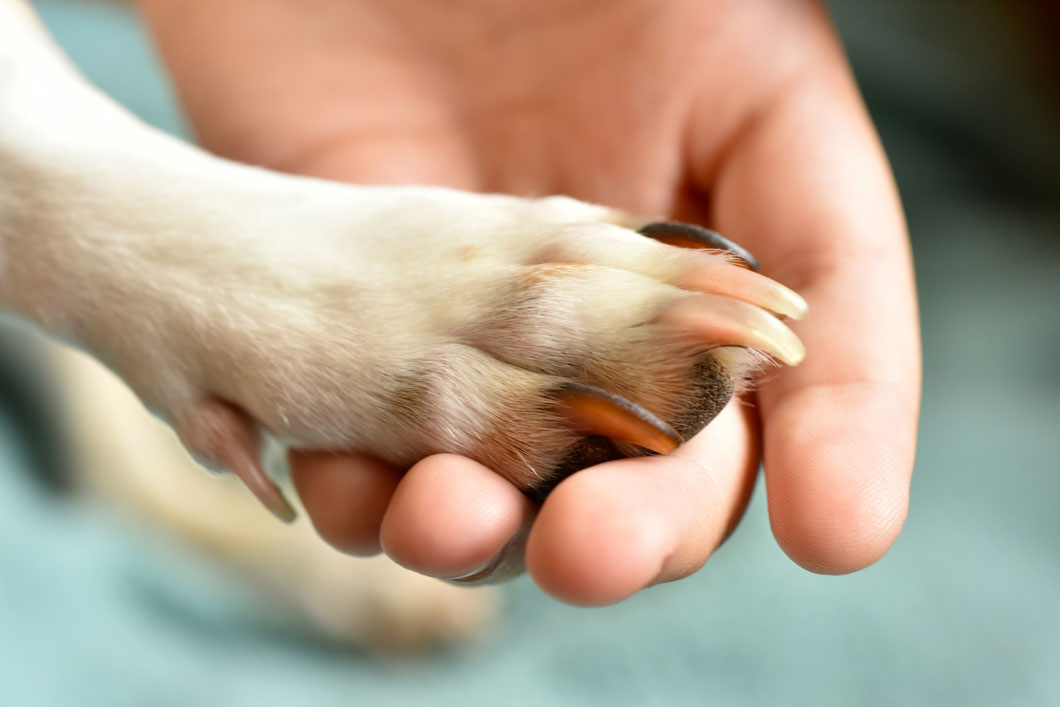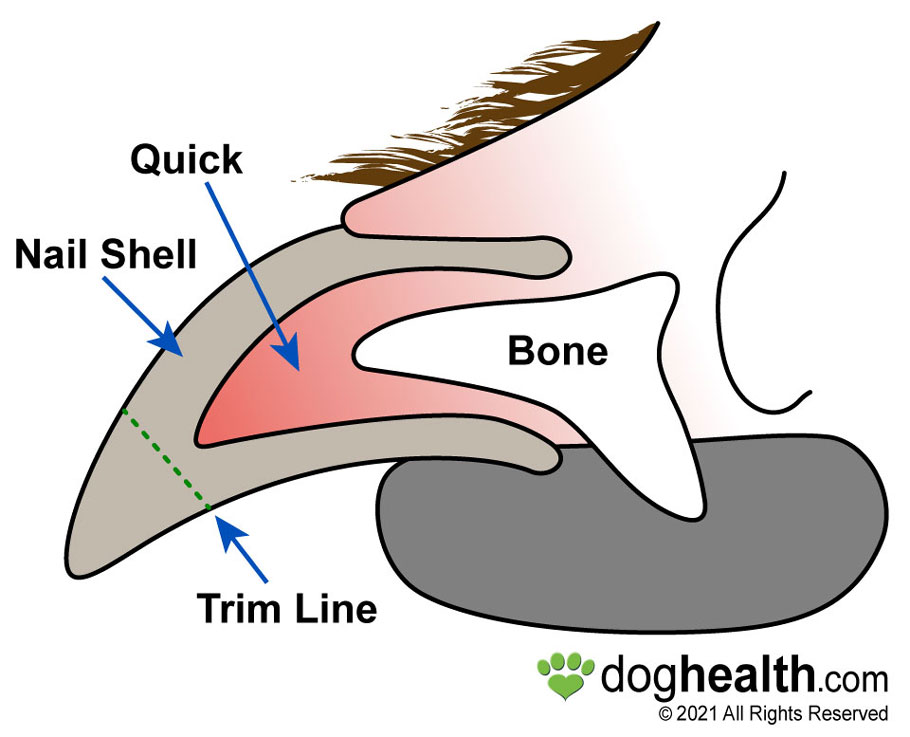Is a Torn Nail on a Dog Dangerous?

It's one of the most common things dog-owners call emergency clinics or their own vets for—a torn or cut-too-short nail. So, what's the scoop? Is a broken nail a dangerous thing for a dog?
Torn or Broken Nails in Dogs
If your dog breaks or tears a nail, it can be a big deal. That's because there are blood vessels and nerves in the claw, and being torn or broken can cause bleeding and pain.

In fact, a broken nail can be so painful for a dog that they may either limp severely or lie down and stop moving.
That's one of the reasons this situation should be addressed and treated quickly. Another reason is the break can allow bacteria to make its way into the dog's toe, which may end up being very serious. In fact, since the nail bed is attached to bone, infection may affect the bone, and then it can be difficult to control and have serious consequences.
Dogs can break or tear their nails by snagging them in carpet, bending and breaking them from an inaccurate jump, or they may break if they are overly brittle. Owners may easily cut nails too short when trimming, as well.
What Do I Do About My Dog's Torn Nail?
First, if the nail is bleeding, that must be addressed. Have someone restrain your dog by hugging her. This can also help the dog feel better. Put a muzzle on the dog because even the nicest one may bite when painful.
Apply firm pressure to the bleeding toenail with gauze or a towel for a few minutes to stop the bleeding. You may also use styptic powder if you have some. Sometimes, flour or baking soda may work.
Once the bleeding is controlled, the dog will need to have any hanging nail removed. This is often painful, so it's usually best if you take your dog to a veterinarian for the procedure. Additionally, the dog may need medications and further treatment, so heading to the vet right away is the best idea.
The vet may shave fur off your dog's toes to see the wound better and also decrease sources of dirt and bacteria from getting to the wound. Once the broken nail is removed—likely with some local anesthesia by the veterinarian—and the bleeding stopped, the nail should be gently cleansed with warm water. Then, antibiotic ointment can be applied and a bandage put on the paw. Your dog may need to wear an E-collar to keep her from removing the bandage.
A bandage should only be placed on the paw by a veterinarian, since it's easy to get one too tight and interfere with blood flow. If you are doing first aid at home, consider a child's sock to keep your dog from licking the wound until you can see a vet.
Your veterinarian will probably prescribe pain medication for your dog and possibly oral antibiotics. A return visit will likely be recommended to remove the bandage, check the foot, and possibly replace the bandage if needed.
Avoiding Broken Nails
While it's not possible to avoid all cases of torn nails in dogs, you can do one thing to make them less likely to occur.
Keep your dog's nails short by trimming them often. Don't forget the dewclaws if your dog has them. These don't touch the ground, so they aren't worn down by walking on hard surfaces and grow faster than the other nails.
You can learn to trim your dog's nails at home or take your dog to the vet or a groomer routinely to have it done.
You May Also Like These Articles:
What to Do If Your Dog Can't Get Up
10 Ways to Keep a Dog Busy Inside
4 Easy Ways to Improve Your Dog's Quality of Life
Disclaimer: This website is not intended to replace professional consultation, diagnosis, or treatment by a licensed veterinarian. If you require any veterinary related advice, contact your veterinarian promptly. Information at DogHealth.com is exclusively of a general reference nature. Do not disregard veterinary advice or delay treatment as a result of accessing information at this site. Just Answer is an external service not affiliated with DogHealth.com.
Notice: Ask-a-Vet is an affiliated service for those who wish to speak with a veterinary professional about their pet's specific condition. Initially, a bot will ask questions to determine the general nature of your concern. Then, you will be transferred to a human. There is a charge for the service if you choose to connect to a veterinarian. Ask-a-Vet is not manned by the staff or owners of DogHealth.com, and the advice given should not delay or replace a visit to your veterinarian.



